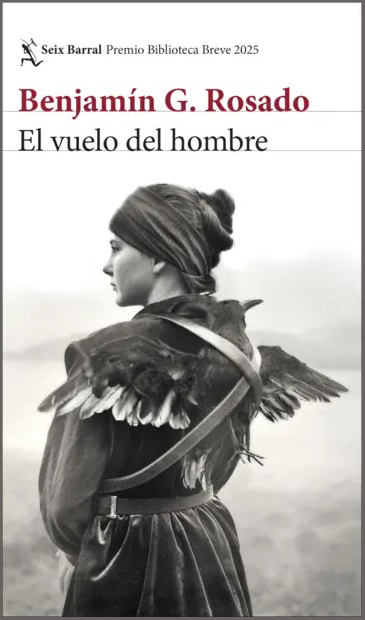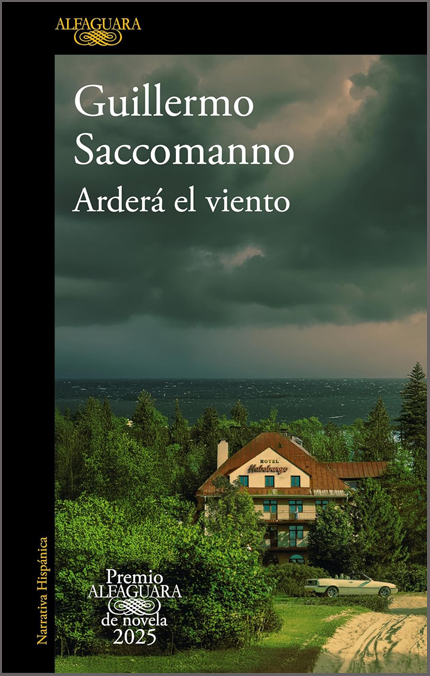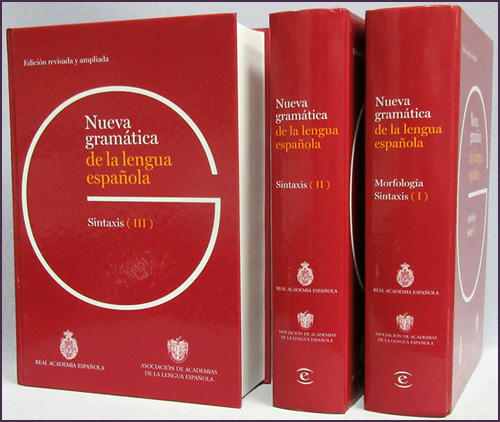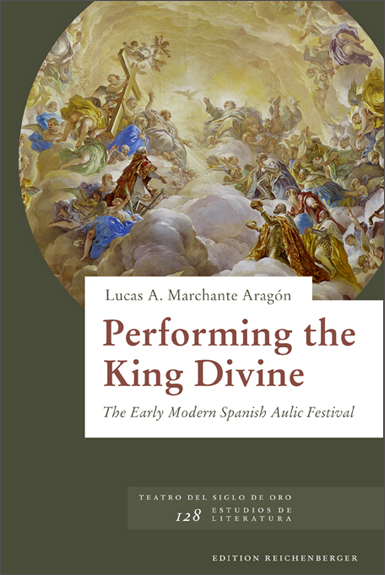Performing the King Divine. The Early Modern Spanish Aulic Festival -- Marchante-Aragón, Lucas A.
ISBN13: 9783944244549
サイズ: 16.5 x 24 x 2.2 cm
頁 数: xii+296 pgs.
重 量: 0.67 kgs
装 丁: hard cover
出版社: Reichenberger
発行年: 2017
発行地: Kassel
双書名: Teatro de Siglo de Oro/Estudios de literatura, 128
PDFリンク: ※ 詳しくはこちら (PDF追加情報)
Early modern aulic festivals were a dazzling display of virtuosity that coordinated in a single event all the best artistic production available at court. Such was the interdependence of the arts in the early modern spectacle, that the playwright Calderón de la Barca, in presenting his works in print, lamented the shortcomings of his verses when they lacked the accompaniment of the other arts responsible for bringing the show alive: ‘Some parts will seem unexciting because paper cannot bring forth the sounds of music, nor the spectacular quality of the scenery, unless the reader is capable of exercising his imagination to behold in his mind what these could had been.’ The fantastic sceneries which could appear or disappear with magical special effects; the brilliance of the costumes made of the richest materials; the precision of movement of dancers dancing to the harmonic music played by the court musicians; the sublime expression of words in poetry; all were brought together to proclaim the inventiveness, the wealth, the ordered skill, the harmony, and the eloquence that the prince could master in his domain. In this way, these spectacles created the image of power; an image which did not reflect the dynamics and hierarchies of the society that produced them, but rather modeled and molded them.
Performing the King Divine proposes a framework for the systematic consideration of early modern festivals in the Spanish courts as a coherent phenomenon of ritual performance for the creation of a divine image of royal power using a historical, artistic, literary and anthropological approach. Starting with medieval examples that convey the ruler’s physical proximity to the divine, and ending with the identification of the ruler with the divine during the reign of the last Spanish Habsburg monarch Charles II, this study looks at the evolution of the discourse that represents the Habsburg dynasty’s divinely inspired imperial rights by means of performance within the cultural context of the productions.
As ritual, the performance of these spectacles represent the place of the ruler in the order of things. The ideal society and culture surrounding him are represented and secured under the auspices of divine ordainment. In the process of the representation of this ideal order, these spectacles do not just reflect, but actually create such an order. Hence, the title of this book, Performing the King Divine, conveys a double meaning. On the one hand, in the process of the performance, the image of the king is performed onstage as the connection between his subjects and the divine realm. On the other, the spectacle, just as what John Searle termed a performative utterance, creates a new reality in the world: the body of the king as a divine being.
The available studies on early modern Spanish aulic spectacles have either approached these examples of cultural production from a single discipline, or when they have attempted a more interdisciplinary approach, they have focused on one particular work or author. In order to address the variety of media that served the production of royal celebrations throughout the early modern period, Performing the King Divine provides an interdisciplinary evaluation and analysis of the early modern Spanish court spectacle from historical, anthropological, literary, and artistic points of view.
Methodologically, Performing the King Divine has been inspired by the works of anthropologists that have studied the representation and creation of power through ritualized performance. It explores the ritualistic value of Spanish early modern court spectacles within a context - the heavily theatricalized courts of the Spanish Habsburgs - that could be described as ‘theater state.’ This monograph treats these cultural manifestations as performance, rather than just text, and as works that bring together all possible forms of artistic expression to convey the message relevant to their particular milieu.
Scholarship on royal entertainment in Europe from the 1960s until today has largely ignored the influence of the Spanish courts in the creation of the discourse (reflected in architecture, painting, music, poetry, etc.) that sustained the production and performances of these events. Performing the King Divine addresses this scholarly blindspot. The book not only suggests that we should reconsider the influence of Spanish court performance, it also makes material available which can be used for a reevaluation of the creation and dissemination of European courtly festive traditions in which the Spanish examples should be considered central rather than marginal.
-

2025年Biblioteca Breve賞受賞作品。ある若き言語学者が南米の港町へ旅立ち、自らの未来を模索しながら執筆に挑む物語です。偶然の出会いが彼の最初の小説を生み出し、出版の成功によってニューヨークへ移り住むも、そこから作品と現実のズレに苦しみ、やがて忘れ去られていく運命を辿ります。しかし、思いがけぬ知らせが彼をコロンビアのジャングルへ導き、かつての小説の結末と酷似した“事故”の謎に巻き込まれていきます。現実とフィクションの境界が揺らぐ中で、「語られるべき物語」と「黙されるべき物語」の間にある微妙な線をめぐる、緊張と知性に満ちた冒険小説です。
- El vuelo del hombre ∥ Rosado, Benjamin G.
- ¥6,380
-

アルフアグアラ文学賞2025年受賞作。ある夫妻がアルゼンチンの海辺の小さな町に姿を現し、老舗ホテルを経営し始める。家族を伴ったその異質な存在が、村社会のひび割れに潜む偏見や恐怖、秘められた欲望をあぶり出していく。表向きは穏やかな日常が、彼らの介入によってゆっくりと腐食し、町の底に潜む暴力と暗部が静かに露呈していく。精緻な文体で綿密に構築された“社会の朽ちるプロセス”が、特定の国や地域を超えて現代の精神風景を写し出す。緊張感と抑制のなかに秘められた強烈な物語体験を求める読者に。
- Arderá el viento ∥ Saccomanno, Guillermo
- ¥5,720
-

2025年ナダール文学賞受賞作品。南米・ブエノスアイレスを舞台に、父との溝を抱える一人の作家が、故人となった父の真の姿を探し始める。労働者階級の移民としてスペインから渡った父は、息子が憧れた文学の道に無言で壁を築いていた。母国映画やハリウッドの古典に囲まれ育った少年は、大人になった今、スクリーンの背後に隠された父の「秘密」に気付き、渦巻く沈黙と誤解の中に分け入る。時代を越えて響く父子の断絶、移民としてのアイデンティティ、そして愛しながらも理解しきれない存在。静かに、しかし確実に胸に迫る物語が、読む者の言葉と記憶を揺さぶる一冊。
- El secreto de Marcial ∥ Fernández Diaz, Jorge
- ¥6,600
-

入荷いたしました!!
第2版改定新版 「アカデミア最新スペイン語文法」。スペイン王立アカデミーとASALE(スペイン語アカデミー協会)の共同編集による増補改訂版3巻本。2009年に2巻本として出版されてから16年、さらに広く深く、スペイン語圏全体のスペイン語を総合的に扱うスペイン語文法書の決定版です!- Nueva gramática de la lengua española - Edicion revisada y ampliada in 3 vols. ∥ Real Academia Española
- ¥49,500

